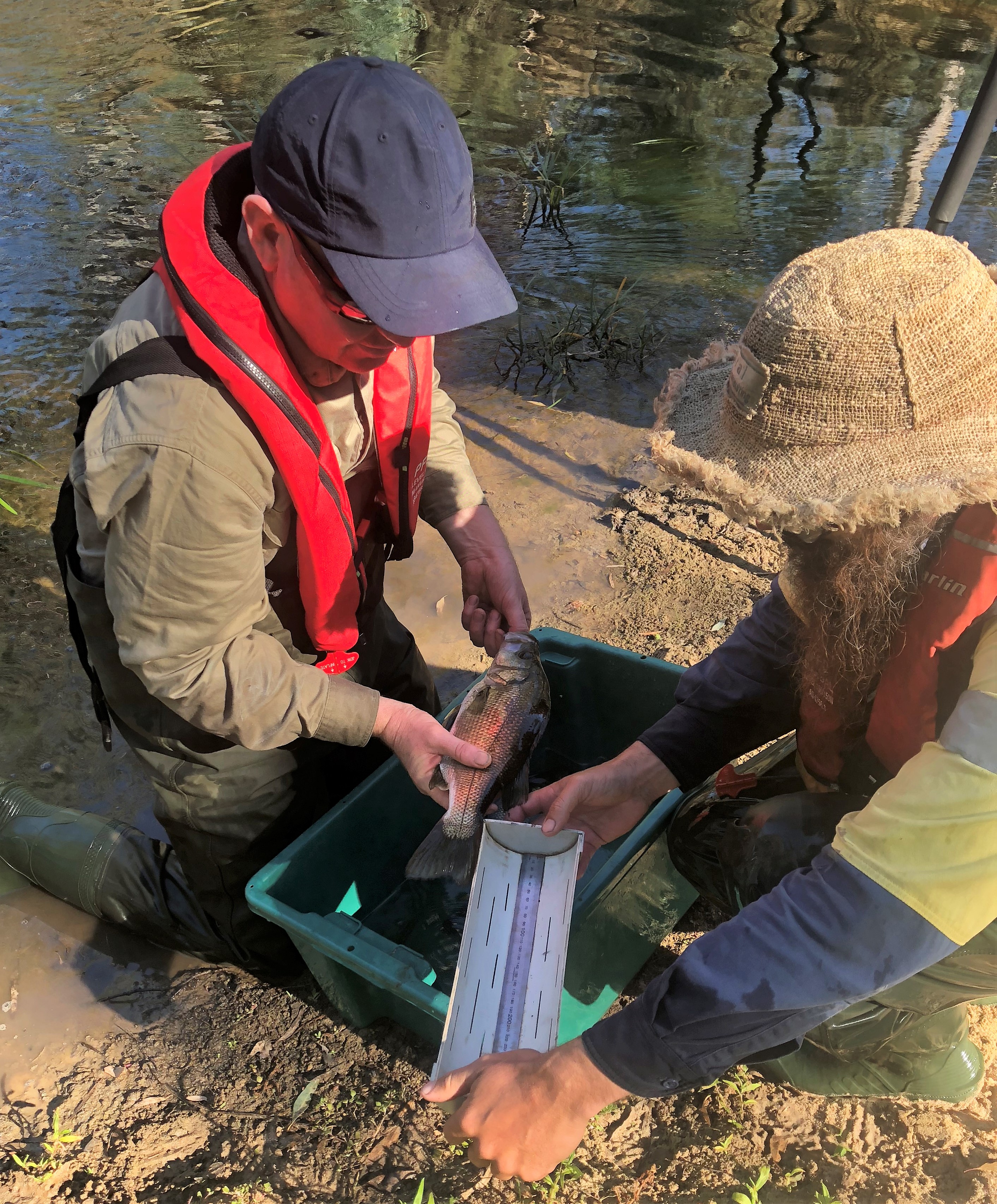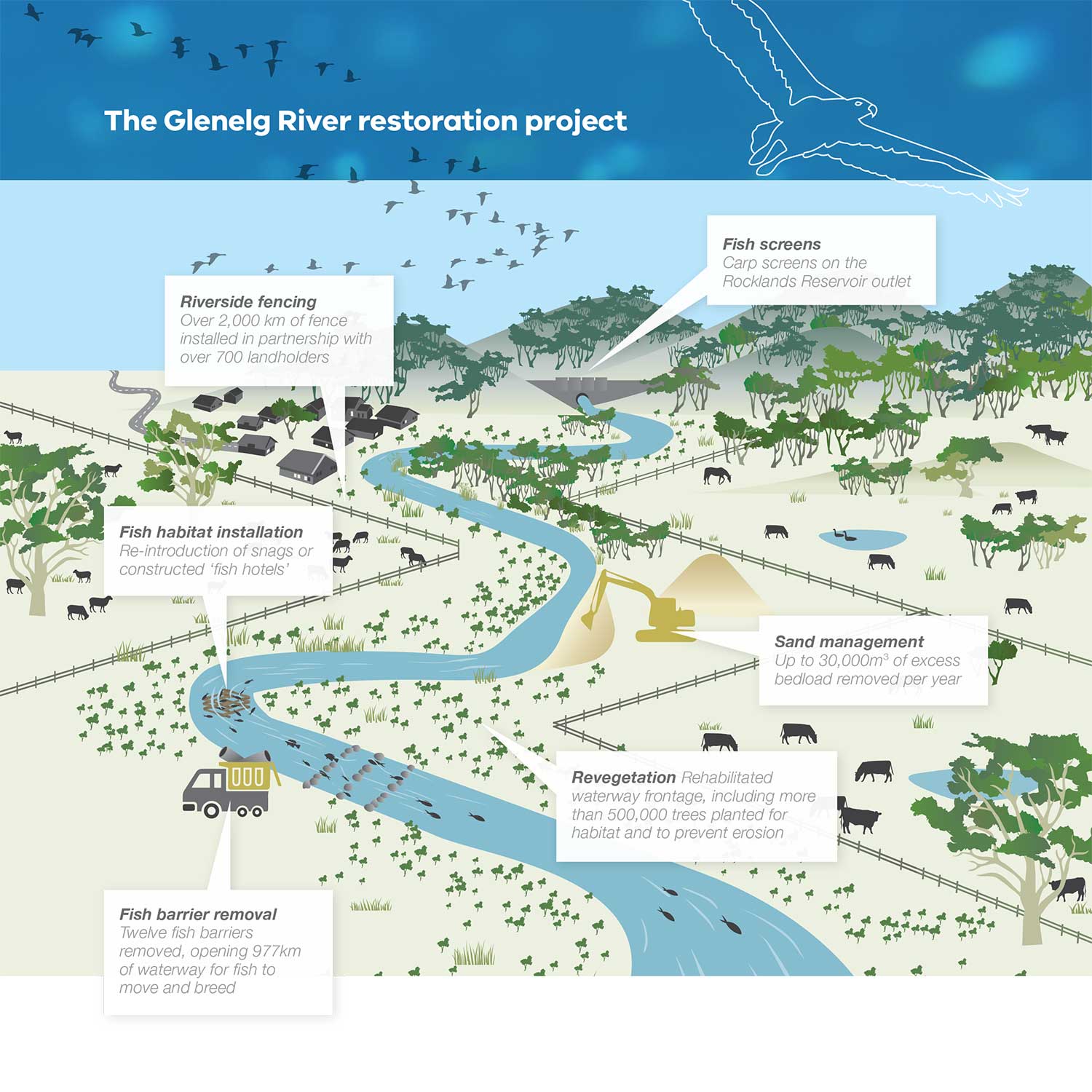Just adding water for the environment is not the only factor to consider for improving the health of rivers, wetlands and floodplains; complementary works and measures are also equally important as part of ‘integrated catchment management’.
Integrated catchment management is a holistic way of managing land, water and biodiversity from the top to the bottom of a catchment. This might include activities such as invasive species control, streamside land management, sustainable agriculture, sustainable land use planning and development, integrated urban water management, providing fish passage or improving in-stream habitat.
Maximising the benefits of water for the environment
Complementary measures are often needed to support the achievement of environmental watering outcomes and to help maximise the benefits from environmental flows.
In this year’s Reflections there are a number of stories that refer to important actions that, together with environmental flows, are helping to meet the environmental objectives set for our waterways - for example, carp removal at Reedy Lagoon and Sale Common, and fencing out feral animals at Little Rushy Swamp.
The Glenelg River Restoration Project
More than 20 years of integrated catchment management for the Glenelg River is paying dividends for the Glenelg Hopkins CMA and the community, with tangible benefits to the health of the river and its plant and animal inhabitants.
Native fish have been particular beneficiaries of the comprehensive, landscape-scale program of waterway works, including: environmental flows, removal of fish barriers, sand management, reducing stock access, installing ‘snags’ and ‘fish hotels’ (adding woody debris in the river for fish habitat) and pest management in-stream and on land.

Measuring estuary perch, by Glenelg Hopkins CMA
“We have fish like estuary perch and tupong moving back into their old range – hundreds of kilometres upstream from where they were found when we started monitoring 10 years ago,” said Glenelg Hopkins CMA’s Bryce Morden.
Recent monitoring under the Victorian Environmental Flows Monitoring and Assessment Program has shown tupong are now moving more than 330 kilometres upstream from the estuary mouth. “This wasn’t possible even four years ago,” Bryce said.
“Our fish monitoring back in 2009 found a single female tupong just upstream of Dartmoor. We’ve since been delivering a program of environmental flows, removed 12 different barriers to fish movement, and installed habitat in the river so they have places to feed and rest – amongst other things. We’ve seen a steady increasing trend over the years in both the range and number of fish we’re catching. In 2018 we captured over 300 tupong in our surveys, including many juveniles, which shows that they’re breeding and recruiting.”
Other recreational fish species such as the estuary perch have also responded to the river restoration works. These key angling species are also found well up the river system and are being caught in big numbers.
